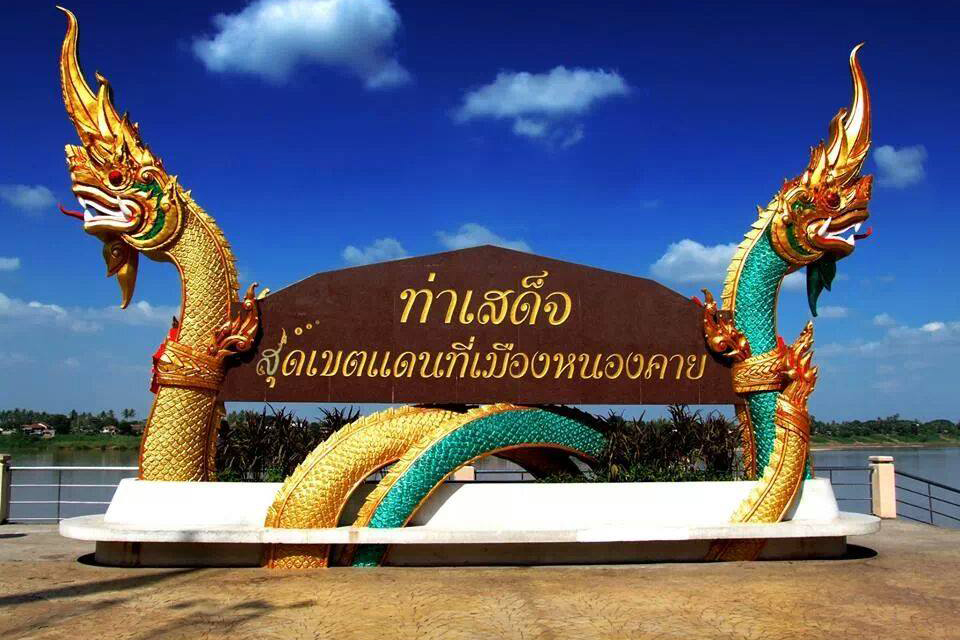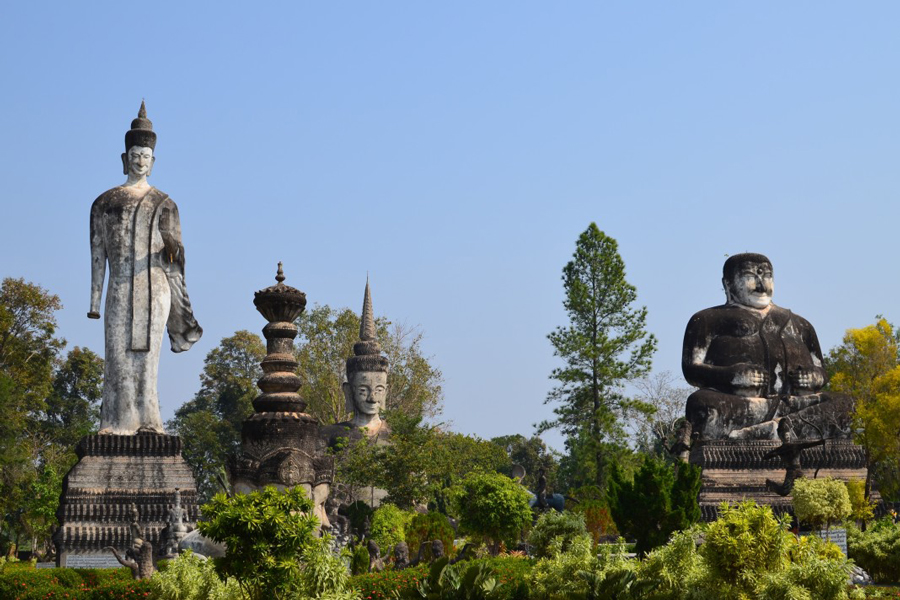Nong Khai

Nong Khai, nestled along the banks of the majestic Mekong River in northeastern Thailand, captivates visitors with its enchanting blend of cultural heritage and natural beauty. The provincial capital, also named Nong Khai, exudes a tranquil charm, inviting exploration of its riverside promenade and vibrant local markets.
 Nong Khai province in Thailand
Nong Khai province in Thailand
Steeped in history, the region showcases temples and historical sites, including the revered Phra That Nong Khai, a stupa believed to house a relic of Lord Buddha. Sala Kaew Ku, or Wat Khaek, introduces a whimsical touch with its eclectic sculpture park, a testament to the creativity of Luang Pu Bunleua Sulilat. As a key gateway between Thailand and Laos, the Thai-Lao Friendship Bridge stands as a symbol of cross-border connection. Nong Khai also hosts unique events like the Naga Fireballs Festival, adding an element of mystery to its allure. With a gastronomic scene rich in Isaan flavors and the backdrop of natural wonders in parks like Nam Phong, Nong Khai promises a captivating and diverse experience for those eager to explore this northeastern gem.
Nong Khai, situated on the banks of the mighty Mekong River in the northeastern region of Thailand, encapsulates a rich historical narrative that reflects the resilience and adaptability of its inhabitants through the ages. The province's story begins with the traces of early human settlements, evolving as a melting pot of diverse cultures and influences. In the 14th to 18th centuries, Nong Khai found itself within the sphere of the Lan Xang Kingdom, a dominant Lao power that left an indelible mark on the region's cultural landscape. As dynasties shifted, the sway of Ayutthaya and subsequent Siamese control brought about further transformations, contributing layers to the multifaceted identity of Nong Khai. The late 19th and early 20th centuries marked a pivotal period, with the looming specter of French colonial expansion heightening the strategic importance of the province along the Mekong. The Thai-Lao Friendship Bridge, inaugurated in 1994, not only solidified Nong Khai's role as a vital cross-border gateway but also ushered in an era of enhanced regional cooperation and connectivity between Thailand and Laos.
 Nong Khai statues
Nong Khai statues
Within Nong Khai's cultural tapestry, religious and spiritual landmarks such as the Phra That Nong Khai stupa stand as testaments to the enduring significance of Buddhism. The revered relic contained within the stupa serves as a focal point for pilgrims and tourists alike, drawing them into the spiritual heart of the province. Additionally, the artistic marvel that is Sala Kaew Ku, initiated by the visionary monk Luang Pu Bunleua Sulilat, introduces a fantastical dimension to Nong Khai's cultural heritage. This sculpture park, adorned with colossal and imaginative figures inspired by Buddhist and Hindu mythology, is a testament to the synthesis of spirituality and creativity that defines the province.
 Visiting Sala Keoku in Nong Khai
Visiting Sala Keoku in Nong Khai
As we traverse the landscape of Nong Khai's past, we witness not only the tangible remnants of history but also the intangible threads that bind the province to its roots. Nong Khai today is not merely a repository of memories but an active participant in the unfolding narrative of Southeast Asia. Its role as a bridge between Thailand and Laos, both metaphorically and physically, underscores the dynamic interplay of tradition, modernity, and cross-cultural collaboration that defines this captivating province. In exploring Nong Khai's extensive history, one discovers not only the echoes of bygone eras but also the vibrant resonance of a province that continues to evolve and shape its destiny along the banks of the Mekong.
You may also like: How to get to Koh Phi Phi from Krabi?
The best time to visit Nong Khai, as with many parts of Thailand, is during the cool and dry season, which typically spans from November to February. During these months, the weather is more comfortable, with milder temperatures and lower humidity. This season is considered ideal for exploring outdoor attractions, historical sites, and cultural landmarks in Nong Khai, as you are less likely to encounter heavy rainfall or extreme heat.
 Best time to visit Nong Khai
Best time to visit Nong Khai
1. November to February (Cool and Dry):
- This period offers pleasant temperatures, making it suitable for outdoor activities and exploration.
- The cool weather is particularly favorable for visiting temples, such as Phra That Nong Khai, and enjoying the scenic landscapes along the Mekong River.
2. March to May (Hot):
- March to May is the hot season in Nong Khai, with temperatures rising. While it can still be a good time to visit, be prepared for warmer weather, especially during midday.
- The hot season is suitable for those who don't mind higher temperatures and want to experience local events and festivals.
3. June to October (Rainy Season):
- The rainy season in Nong Khai typically occurs from June to October, with increased rainfall and higher humidity.
- While the landscape becomes lush and green during this time, outdoor activities may be affected by heavy rains. The Naga Fireballs Festival, a unique event in October, attracts visitors to witness mysterious fireballs rising from the Mekong River.
Reaching the enchanting province of Nong Khai is an accessible and diverse journey, offering travelers various transportation options. For those arriving by air, Udon Thani International Airport stands as the nearest major gateway, merely 60 kilometers away. Travelers can seamlessly continue their journey to Nong Khai by taxi, bus, or private transport from the airport. Train enthusiasts can embark on a scenic adventure aboard the overnight sleeper train departing from Bangkok's Hua Lamphong Station, crossing the iconic Thai-Lao Friendship Bridge to arrive at the heart of Nong Khai. Extensive bus services, departing from Bangkok's Northern Bus Terminal (Mo Chit), provide an alternative ground option, promising a 9-10 hour journey through the diverse Thai landscape. For those seeking the freedom of the open road, renting a car offers flexibility, with the main route from Bangkok passing through Khon Kaen and Udon Thani. Nong Khai's accessibility and diverse transportation choices ensure that each traveler can embark on a journey tailored to their preferences and style.
You may also like: Top 5 Most Popular Thailand Festivals
Join the Nong Khai Tour 2 Days to uncover the serene beauty and vibrant culture...
Experience the Nong Khai Tour 3 Days: Explore Culture and Scenery. Start with st...